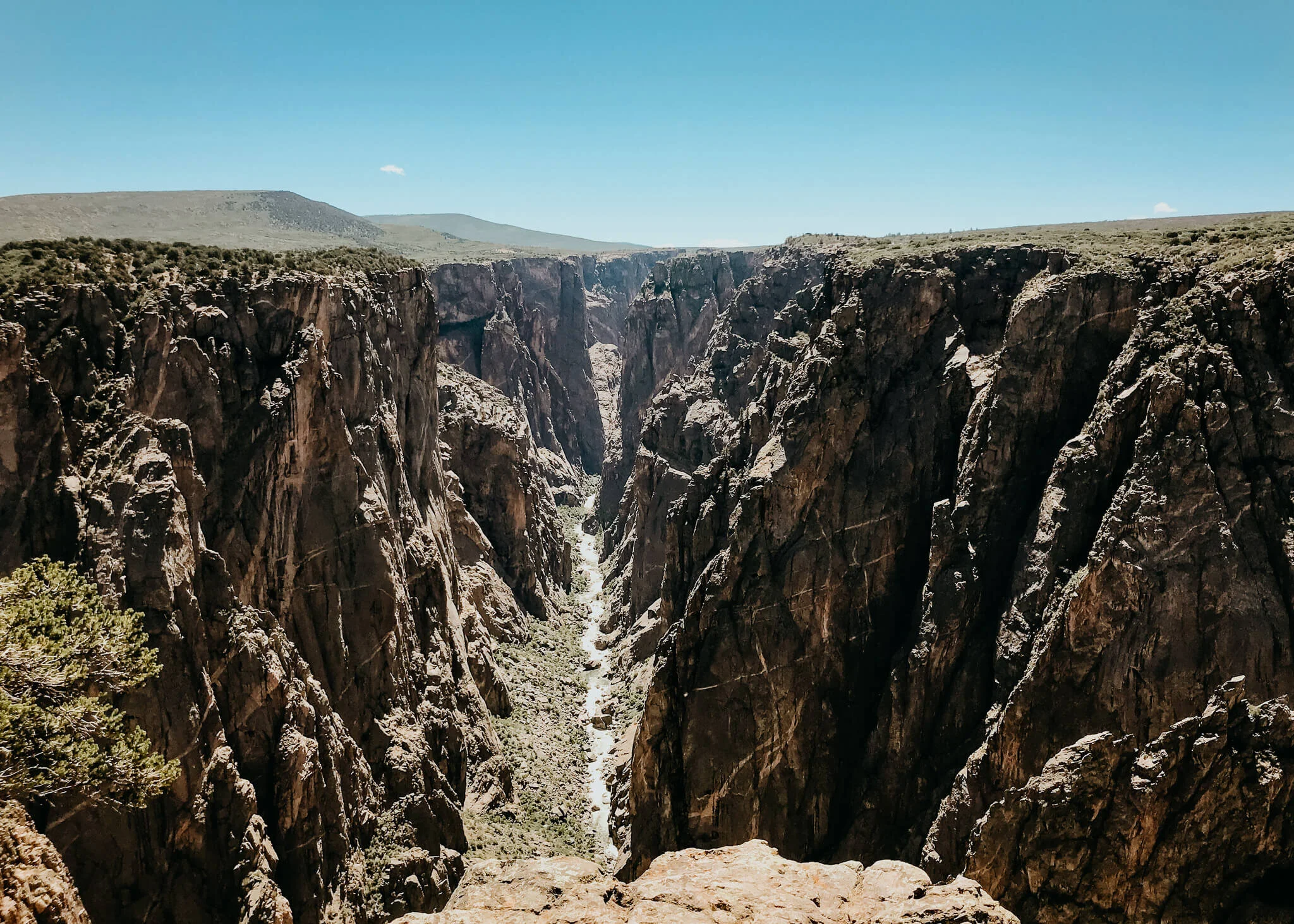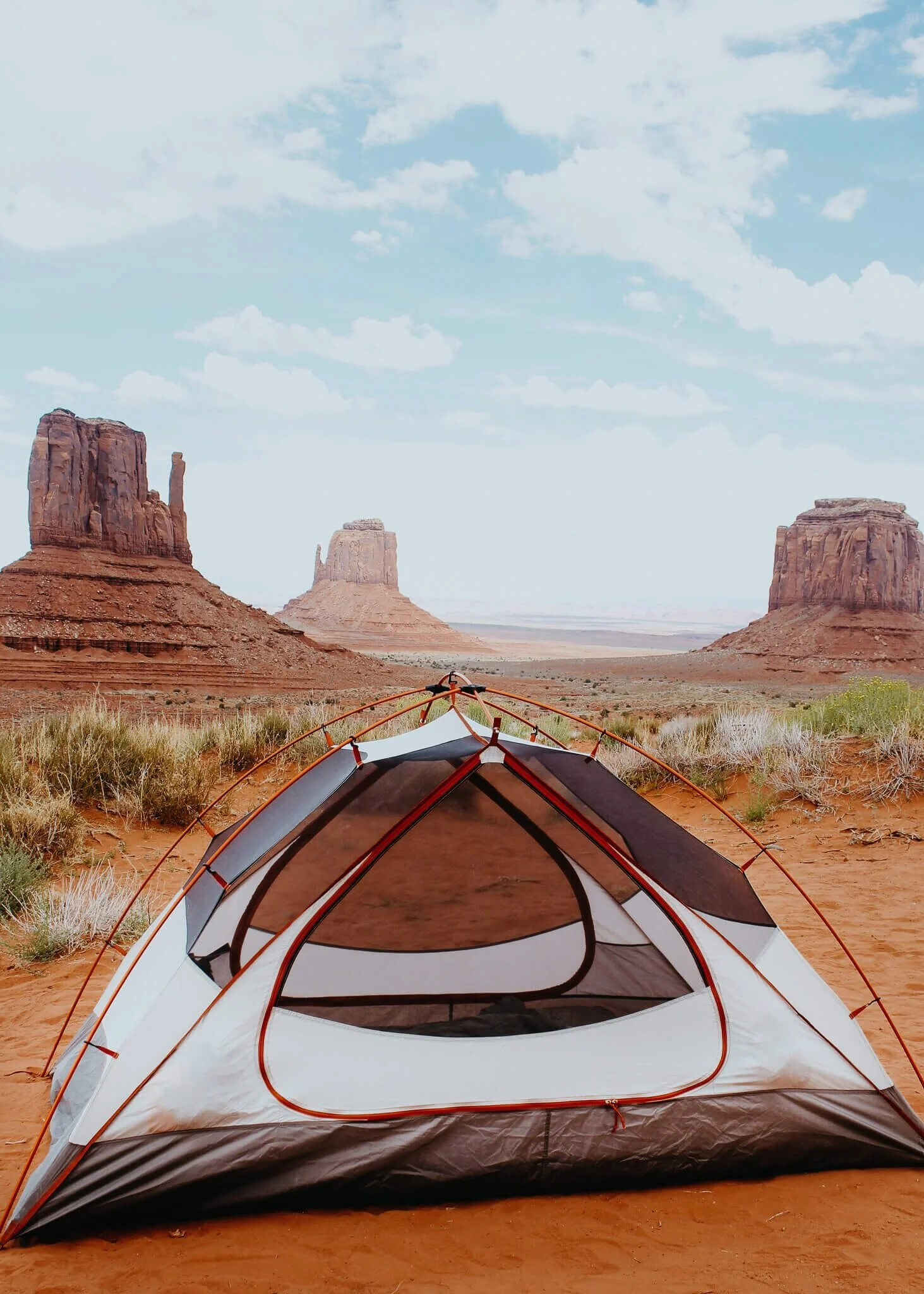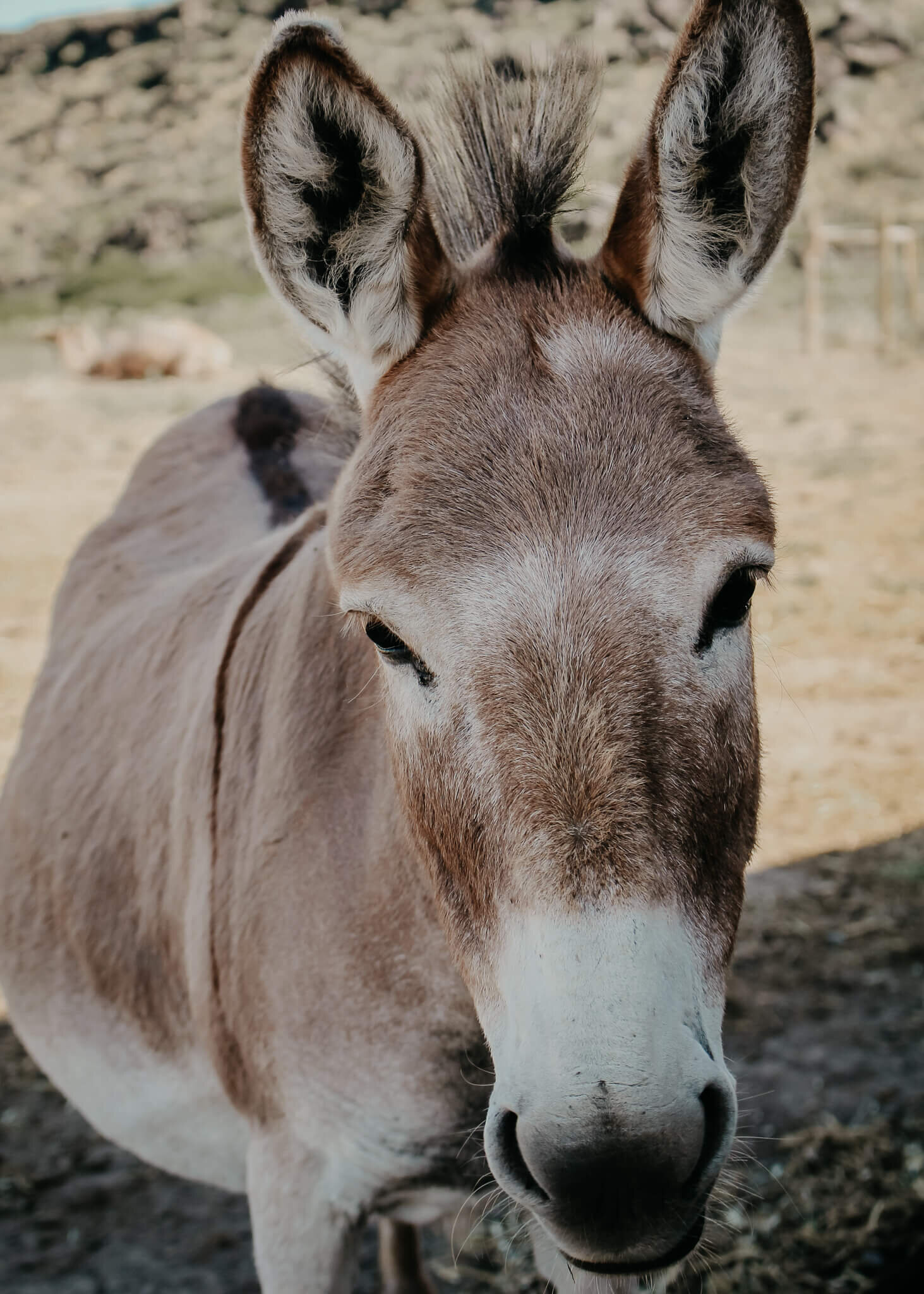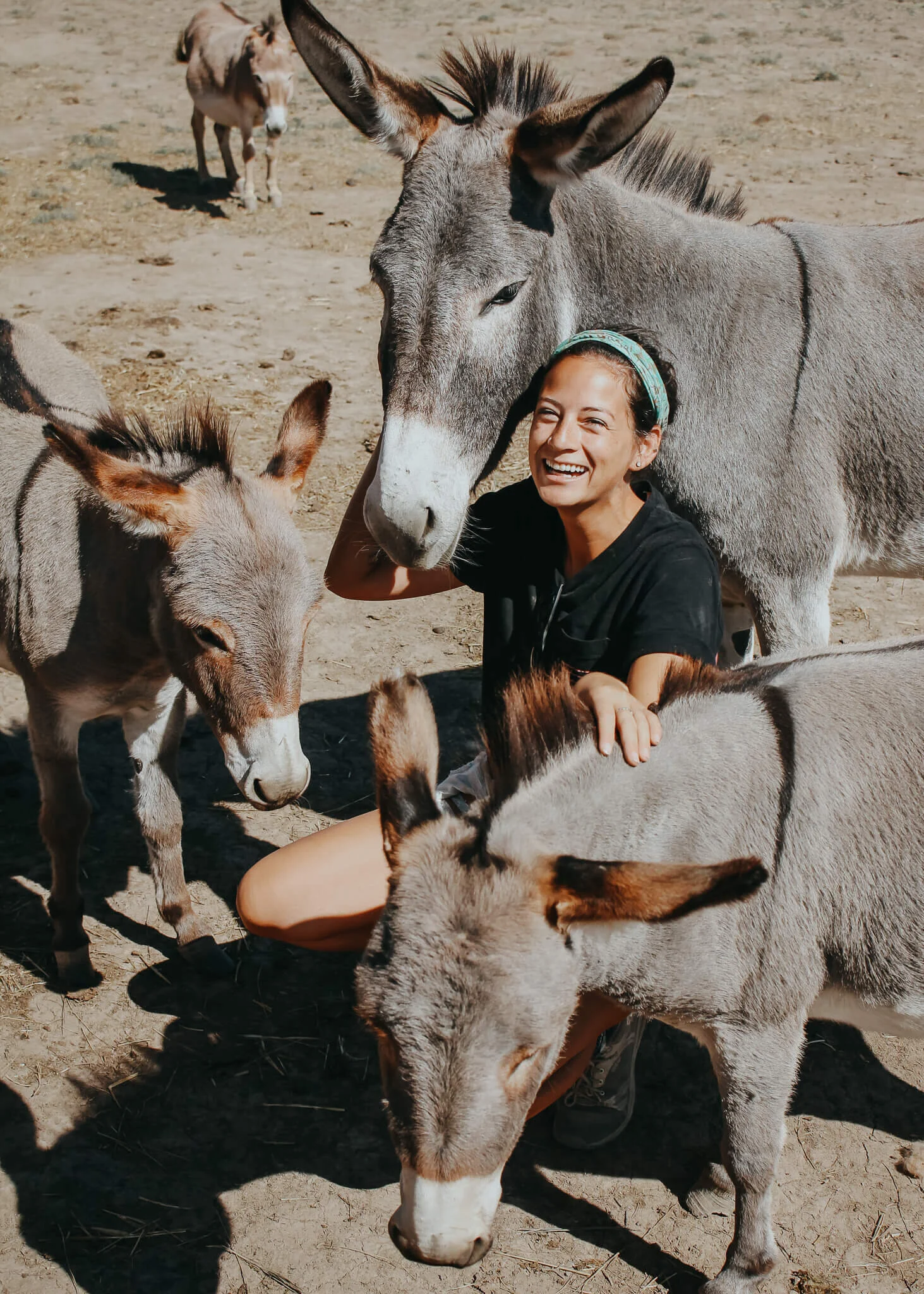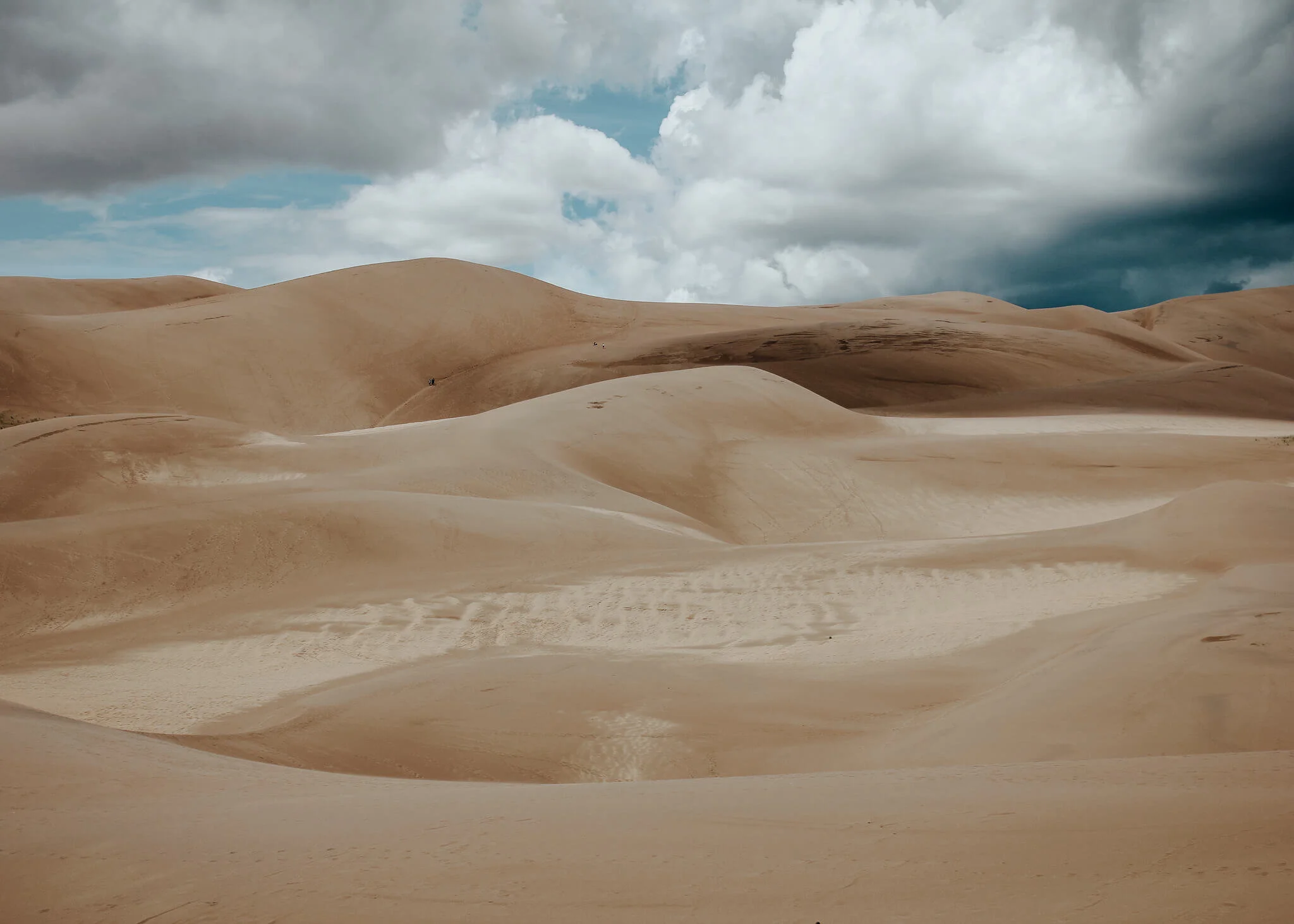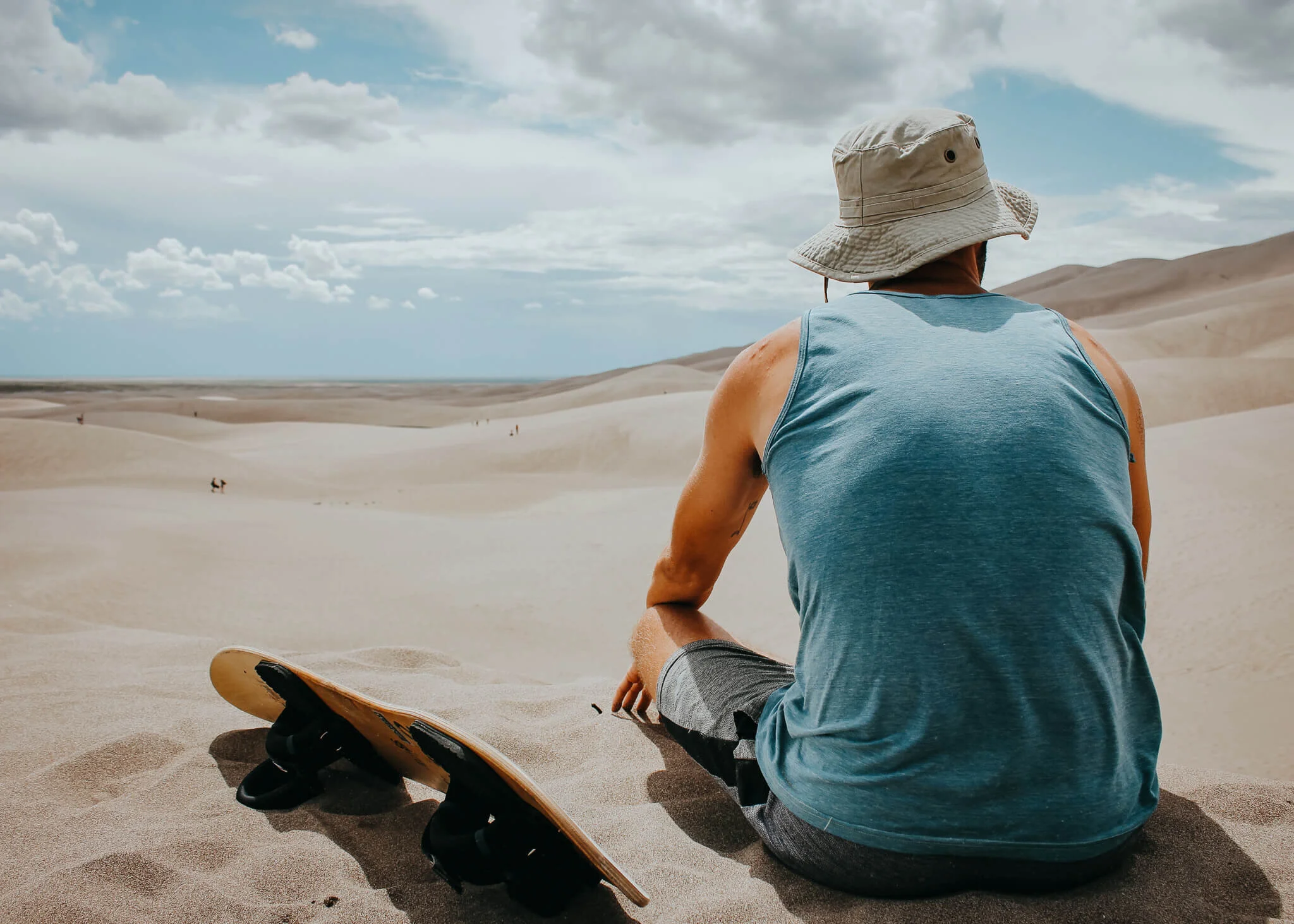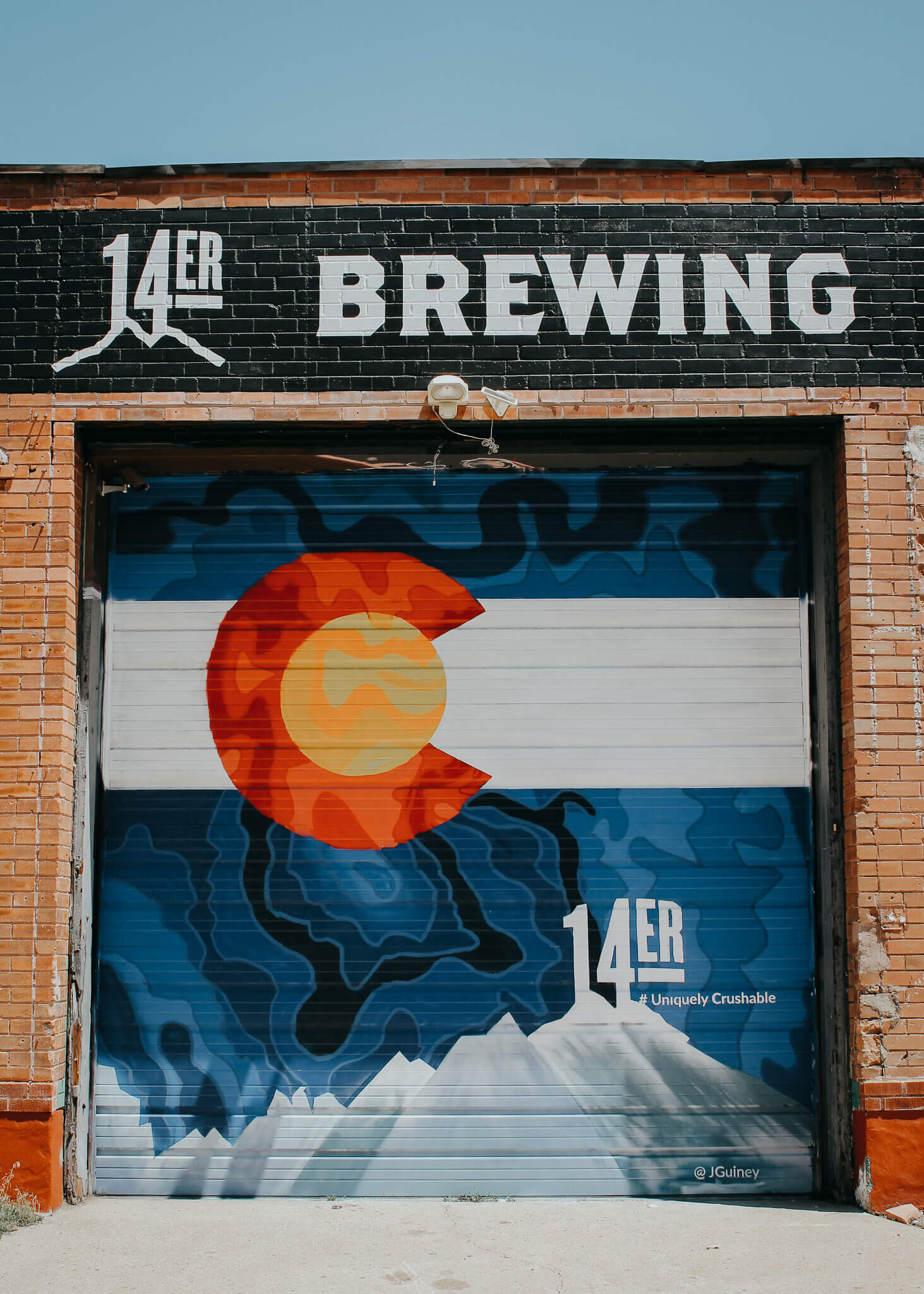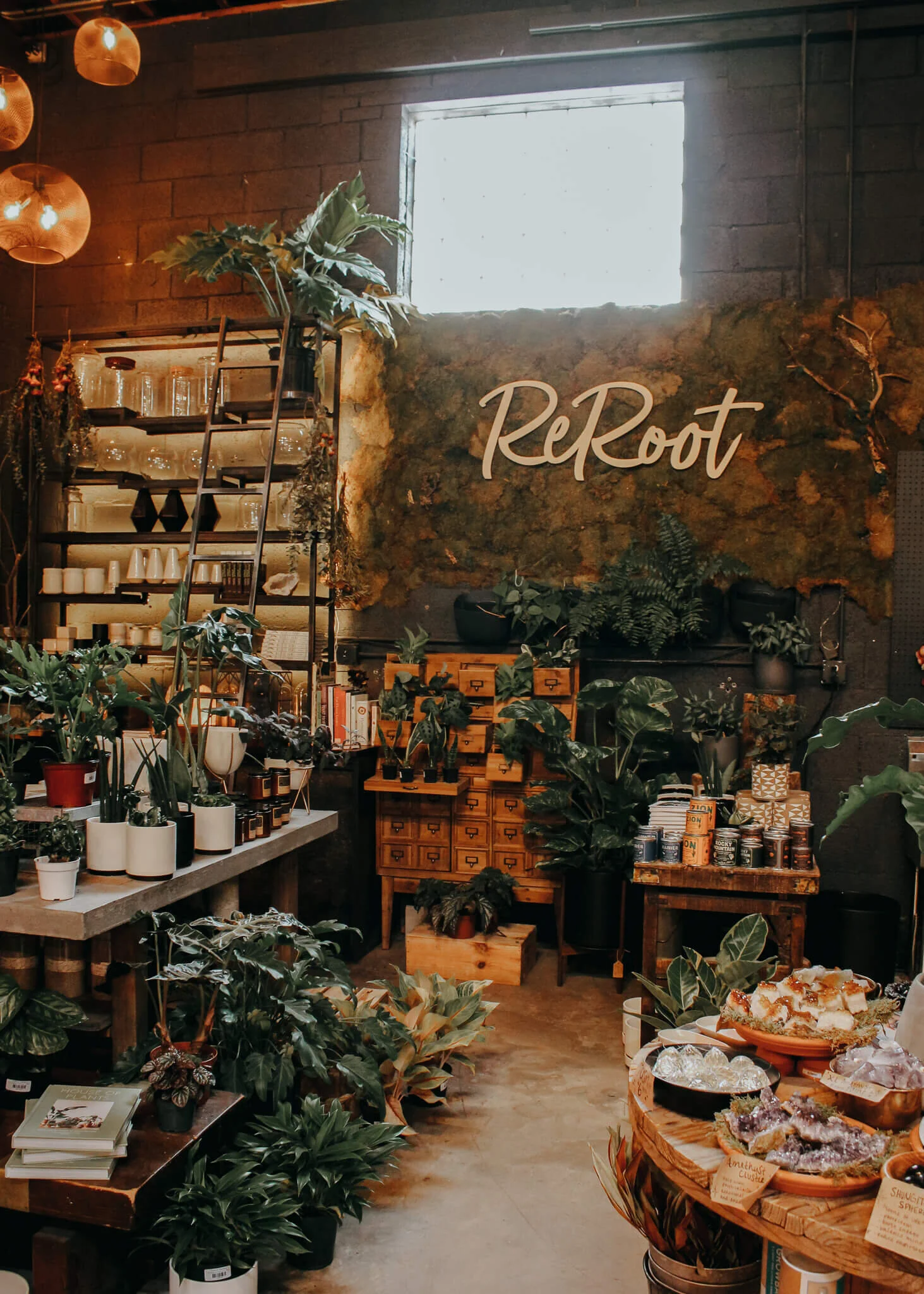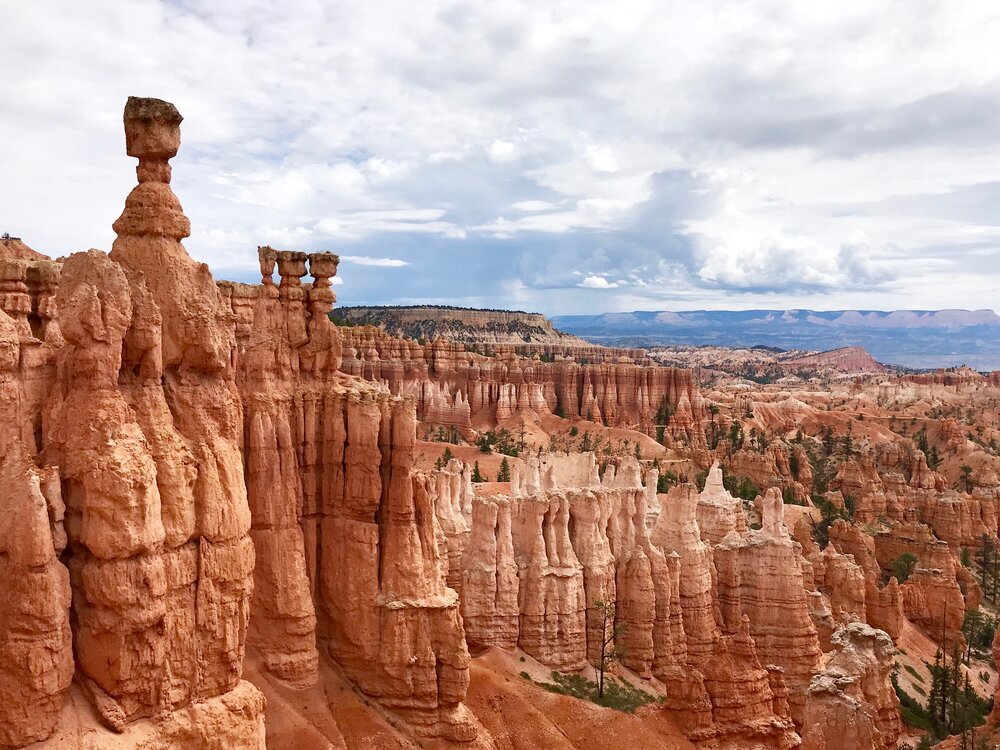Colorado and Utah: A 9-Day Road Trip
If there is a place perfectly suited for a road trip, the Southwest is it. Between its long sunny days and desert landscapes, Utah and Colorado are natural playgrounds with ceaseless opportunities for exploration.
For nine days in July 2019, we did just that: explore endlessly. Five national parks, one state park, a visit to Navaho Nation and brewery hopping in Denver. Whew! What a jam-packed (and very hot) road trip it was.
Perhaps you stumbled on this post while planning your own trip to the Southwest corner of the United States, in which case you’ll find a bevy of tips and places to add to your itinerary. Or maybe you’re here to read about the adventures that ensued; epic desert storms that had us pivoting plans, hugging four-legged creatures in middle-of-nowhere-Colorado and all the misadventures in between. Whatever brought you here, one thing is for sure: by the end of this you’ll be pining to explore the Southwest for yourself as soon as possible.
The Route
Keen to check out Denver, we used that as our entry and exit point. From there, we made a big loop through the western half of Colorado, the eastern bit of Utah and even touched a smidgen of northern Arizona. Click below to be taken to a certain day/area or buckle up and read about the whole journey by scrolling down.
DAY 1 | Denver & Glenwood Springs
day 2 | Gunnison & Dead Horse
DAY 3 | Arches
DAY 4 | Canyonlands
DAY 5 | Monument Valley
DAY 6 | Mesa Verde & Farm Stay
DAY 7 | Great Sand Dunes
DAY 8 - 9 | Denver
Transportation
For our car rental, we used Turo, which is essentially Airbnb for cars. As opposed to a traditional rental agency, we found Turo’s cost to be competitive and the booking process more flexible. Plus, we were able to choose the exact car we wanted - none of that “get this SUV or similar!” business that traditional car rental agencies offer. We organized everything on the Turo app and had our chariot waiting for us in the airport parking lot as soon as our plane touched down.
Cost: Toyota Rav4, $748 total for 9 days (including insurance)
the itinerary
Day 1 | Denver & Glenwood Springs
After picking up the car we made a beeline to REI to pick up camp essentials for our adventure ahead. A few camp meals, a new cooler and some fuel canisters later, we were on the open road.
Gunnison National Park is a 5.5 hour drive from Denver (or from anywhere for that matter) and such a drive did not sound appealing after a flight. Our solution? Overnight at the halfway point, which happened to be Glenwood Springs. There isn’t much to do in this sleepy town but we took advantage of their hot springs and microscopic-sized brewery scene. Iron Mountain Hot Springs is a busy place so our advanced reservation served us well. Is it the most “natural” hot spring experience? No. But a selection of pools and a few glasses of booze made it a lovely time.
Day 2 | Gunnison & Dead Horse
We had another early start to reach Black Canyon of the Gunnison National Park. You may note now that “early start” was to become a common theme throughout our trip. The first, and arguably most important, stop of the day was to Coloradough, a donut shop straight after my heart (though what donut shop isn’t?). While ringing up our loot of carbs, the man behind the counter casually said, “and some whiskey to go with these?” We laughed politely and assured him that we did not require whiskey at 8am. “Oh no, it’s on the house,” he said, as if its being free changed the fact that the sun had only just risen. “Here,” he said pushing the shots of whiskey toward us. “Cheers,” he smiled. Cheers indeed.
With whiskey and donuts warming our bellies, we hit the asphalt highway toward Black Canyon of the Gunnison National Park. Like its mouthful of a name, it is long and straight to the point. Standing upon its rocky ledge and gazing 2,000 feet down, straight into the abyss of a black canyon - Colorado’s deepest canyon, mind you, is what one would call a “humbling experience.” Nature has a knack for making one feel minuscule and inconsequential, doesn’t it?
Black Canyon of the Gunnison
This 48-mile canyon is all cliff faces, sheer drops and canyon walls that look as if they were carefully chiseled into 90° angles to intimidate all who look upon it (which it successfully did). Being in the middle of absolutely nowhere, or at least a five hour drive from anywhere that can be deemed “somewhere,” it’s little surprise that Gunnison is one of the least visited national parks. Had we not been driving through, we probably would have skipped it, but I’m glad we didn’t. With only a half-day to explore, we chose to visit the North Rim though there are a few other areas to check out if given more time.
NORTH RIM
For a rugged experience and the likelihood of seeing no one else, the North Rim is the way to go. At four miles, the scenic drive is short, boasting only six overlooks, but the views and hiking are arguably the best in the park.
North Vista Trail to Exclamation Point (3 mi.) - what we did!
Deadhorse Trail (5 mi.)
North Vista Trail to Green Mountain (7 mi.)
SOUTH RIM
This area is more popular (“popular” being relative for a virtually vistor-less park) and the scenic drive offers a robust overview of the canyon with its 12 overlooks. A few places to check out along the way are:
Rim Rock Nature Trail (1 mi.)
Oak Flat Loop (2 mi.)
Cedar Point Nature Trail (3 mi.)
The visitor center, of course
INNER CANYON
Why yes, you can get down to the bottom of the canyon but it is not for the faint of heart. People have broken limbs and it’s not uncommon to experience heat stroke. Some have died while reaching the canyon floor. Should you choose to tackle it, you’re in for a 2,000 vertical foot drop in a mere mile. If the height doesn’t get you, the heat will. And if that doesn’t do you in, the poison ivy will finish the job.
Note: A permit is required to hike into the canyon and camping is available (bear canisters required, more for snack-enthusiastic critters and less for bears).
Black Canyon of the Gunnison as seen from Exclamation Point trail
Dead Horse State Park
After a toasty afternoon exploring Colorado’s Black Canyon of the Gunnison, we made our way to an equally toasty Utah where we would spend the next few days. We stayed at Moenkopi Yurts in Dead Horse State Park, a paradise of meandering backyard trails and expansive canyon views. The back porch also provided front row seats to a nightly show of pinks and purples on the horizon at sunset. It is a b.yo.e. sort of place, as in bring your own everything.
The yurt was a convenient jumping off point for Dead Horse Point, a sad name for an epic place. Despite being a staunch tree-loving Pacific Northwestern gal, the landscape of the desert never fails to draw me in and completely envelop my senses. Dead Horse is no exception. It was an immaculate contrast of natural colors; the blue sky popped against the dusty orange mesas which floated down to a muddy green river that gingerly twisted through the canyon.
Twenty minutes from the yurt is the Island in the Sky entrance to Canyonlands National Park. Due to its proximity to Moab and Arches, this is the most popular area to visit in the Canyonlands, so we naturally opted to explore elsewhere. If, however, you don’t mind people and have ample time to explore, adding Island in the Sky is a respectable choice.
Costs: Moenkopi Yurts ($148/night); Dead Horse State Park entrance fee ($20 per car)
Dead Horse Point
Moenkopi Yurts
Day 3 | Arches
We bid adieu to our lovely desert yurt and made our way to Moab, the charming adventure capital of eastern Utah. If we weren’t on a Tour de National Parks mission, I would have happily stayed longer in the desert oasis that is Moab. But we had a goal: Arches National Park.
Arches National Park is a beautiful feat of geology, but unlike Gunnison’s 400,000 visitors per year, Arches brings in a whopping 1.6 million. You can expect plenty of company while ogling at this desert masterpiece. We arrived in July, which, among being a popular time to visit, is also hot. I repeat, HOT. VERY HOT. ALL CAPS. It was steady 104° F during our visit. My body, which overheats around 75° F, was ill-suited to handle Arches in the dead of summer. The crowds, paired with the unbearable heat did not mingle well for me and I did not give the park my full attention. All this is to say, be smarter and save this one for fall or spring.
READ MORE: Travel Guide to Arches National Park
Delicate Arch
Things to do in arches national Park
With so much to see and do, Arches deserves a post unto itself (which you can find here), but here are my favorite stops:
Visitor Center | It hosts an array of interesting information about how the arches are formed. It also has AC.
Balanced Rock | What’s more fun than looking at a rock balancing on another rock? Answer: probably a lot, but it’s still really neat.
Delicate Arch | This 3 mile “hike” gets visitors up close and personal with the most classic sight in the park.
The Windows | A 1.2 mile loop that includes Double Arch, Turret Arch Trail, North Window, among others.
Trails Tower Arch | This is a sweet little spot to explore with less crowds (3.4 miles). As the name suggests, it ends at a towering arch.
Day 4 | Canyonlands
By the fourth day, I was running on a desert high. The landscape had melted into a buffet of mesas, buttes and dunes. I was in constant awe of the array of windows and arches, and my senses feasted on the sight of balanced rocks and the smell dusty sage. On our way to the Canyonlands, we added a new landscape to the list: needles.
Canyonlands National Park is a vast wilderness consisting of three main areas: Island in the Sky, the Needles District and The Maze. We had already opted out of the first and the last is near impossible to visit, which left us right in the middle with the Needles District. As most “middle options” go, it was perfect… for the most part.
As we drove into the depths of the Canyonlands, a remote, rugged and mesmerizing landscape unfolded before us. There was no one: no cars, no people, no wildlife. No life at all except us it felt like. We made our way toward the Elephant Hill trailhead where we had permits to backpack and camp overnight. But before making it there, we were pulled over by a park ranger. Apparently we weren’t alone after all. The ranger gave us two warnings: 1.) slow down your dang car, and 2.) there is a storm coming tonight.
Well, that put a damper on things.
On the one hand, we preferred not to be the tallest thing in the middle of a desert while a thunder and lightning storm raged above. On the other hand, we didn’t want to turn around and leave. For compromise, we opted for a small campsite and put up the tent for the night. This allowed us to safely stay in the park and explore, while having the car nearby for peace of mind.
We spent the day frolicking in the sun and enjoying the scenery but as the sun dipped below the horizon the storm began. Lightning filled the sky toward Elephant Hill and thunder cracked above us. It felt like the storm was literally over our tent, punishing us for thinking we could stay in this primitive place unscathed. After spending hours huddling in the tent as the rain beat down, we surrendered to the car to go to sleep. After an hour of stuffy breathing and intolerable heat, we sulked back to sleep in the tent. In the morning, we awoke to beautiful blue skies and a dry landscape graciously inviting us to frolic about once again.
Despite our short tenure in the Canyonlands, it was spectacular. Of the national parks I’ve visited, it ranks in the top five (to find out what others made the list, check out My Favorite National Parks) and I’m eager to return in a less tumultuous month. My only regret? Not reading Desert Solitaire by Edward Abbey before the trip. My only other “only regret”? Spending just two days there.
Needles in the distance
Elephant Hill
where to visit in the Canyonlands
ISLAND IN THE SKY
Located in the north, near Moab, it is the most accessible part of the park and is best for a quick visit. Drive the White Rim Rock Road to witness the expansive landscape, check out Mesa Arch or hike to Grand View Point (2 mi.)
THE NEEDLES
This makes up the eastern part of the park and offers a more rugged experience. We explored Big Spring Canyon, Slickrock Foot Trail and (eventually) Elephant Hill. With more time and cooler weather, I recommend to check out Druid Arch (11 mi.) and meander in Squaw Canyon.
THE MAZE
The elusive Maze is smack in the middle of the park and accessible only by raft, foot or horse. To visit, you need a permit, physical stamina and grit. For the true adventurer, a trip into the undeveloped Maze is unbeatable.
Day 5 | Monument Valley
If there were ever a picture-perfect desert scene, Monument Valley takes the cake. With its sweeping landscape and iconic buttes, Hollywood thinks so, too. It’s probably why John Wayne westerns were filmed here, as well as Forrest Gump and many others. Monument Valley, or Tsé Biiʼ Ndzisgaii as the Navajo call it, meaning Valley of Rocks, sits in the heart of Navajo Nation on the border of Utah and Arizona. It boasts dusty red earth, potent sagebrush, epic skies both day and night and rock formations that make you say “woah” more times than you’d like to admit (just me?).
Visiting this remote slice of land is simple and, in my opinion, requires no more than two days to explore. The tourist hub is consolidated into a single area consisting of an expensive restaurant with sub-par food, a tribute to John Wayne disguised as a gift shop, cozy cabins and campsites on the hillside. While there are nicely spaced camp patches, don’t expect to be alone here - it is a popular place. Since it’s tribal land, there are no backcountry options, which keeps the land pristine and protected from over-tourism but packs campers into one spot.
We spent the first day wandering the Wildcat Trail (no wildcats seen) which circumnavigates the Mittens Butte (aptly named, mitten seen). Before leaving the next day, we cruised along the Valley Drive. We took it in quickly as we needed to hit the road for our next destination but I recommend taking a leisurely drive for a few hours to properly say “woah” at all the stellar formations. Further exploration outside these areas requires a Navajo guide.
Cost: Entrance fee to Monument Valley: $20 cash; The View Campground: $21 per tent/night
Things to Do in Monument Valley
Wildcat Trail | A 3.5 mile loop (though it felt like much more…) around Merrick and Mitten Buttes.
Valley Drive | A 17-mile dirt road offering a variety of stops. Best navigated in a 4x4 and dust is inevitable, deal with it.
Forrest Gump Point | What better place to say “run, Forrest, run” than right here?
Day 6 | Mesa Verde & Farm Stay
Mesa Verde National Park, situated in the southwestern corner Colorado, was stop #827 on our road trip itinerary. While I can’t say it’s my favorite park, it has its merits, especially for the ancient history buffs and culture gurus out there. Had we secured a spot to view the ancient Pueblo cliff dwellings, perhaps I’d have a change of heart, but alas, no such thing happened.
We did, however, check out the Visitor and Research Center, drove Mesa Top Loop Road and visited the Badger House Community Trail. The ancient Puebloans lived here over 700 years ago and it was fascinating to see the remains of their homes and villages impressively intact. Overall, there is not an overwhelming amount of activities but considering its remote location and how quickly reservations for cliff dwelling tours sell out, I think two days is key to visiting Mesa Verde properly.
Mesa Verde Must Know’s
DRIVING
It takes at least two hours to get into the park (and back out, of course). This takes a chunk of time so make sure you factor that in when planning your adventure.
CLIFF DWELLINGS
Balcony House, Cliff House and Long House can only be visited on ranger-led tours with a reservation ($7 pp). Advanced tickets sell out quickly, as do the few first-come-first-served tickets that are available. Plan ahead!
VISITOR CENTER
With Mesa Verde’s rich history, a stop at the Visitor and Research Center is essential. The cultural and regional information is engaging and there are ancient artifacts as well.
farm stay
When I booked this farm stay I claimed it was the best $123 I ever spent. To this day, I maintain my assertion with complete confidence. I was immediately smitten by this Airbnb yurt, which truly is in the middle of nowhere, after reading that it was home to a miniature donkey named Snowflake that loved people. I booked it straight away. Was it impulsive? Yes. Was it necessary? Also yes.
The yurt itself is cozy but the main draw is hanging out with the farm animals and learning from the host, Matt. He and his family, a wife and son, moved here a few years prior in the hopes of “living off the land.” They dreamed of having a farm and building their own home, and they did just that. To finance their dream, they built a small yurt to house guests so that people such as myself could live their dream of hanging out with miniature donkeys. And boy do dreams come true.
Since we arrived late at night, we checked in and went straight to bed and planned to meet the animals the next day. In the middle of the night, I got up to pee in the outhouse only to see a camel staring straight into my soul. It was a glorious experience. The next morning, my new camel friend, who I’d later learn was named Anita, said hello again while Matt gave us a tour of the farm. During this tour, I finally had the honor of meeting Snowflake, who melted my heart into a puddle.
Matt shared his story, sprinkling in interesting facts and the ins and outs of running a farm. I listened, or I tried to, but I was compelled to hug four-legged creature within my immediate vicinity. It was the epitome of happiness for me. In addition to the donkey gang, there were also camels (which, fun fact, are native to North America) and cats that waltzed around the place with the amount gusto that only cats can.
As our time at the farm dreadfully came to a close, I said goodbye to all my new friends. As a parting gift, we were given camel’s milk soap to take home with us.
Day 2 | Great Sand Dunes
Like Mesa Verde, I wasn’t over the moon about visiting Great Sand Dunes National Park but being on our route we felt inclined to check it out. We spent a few hours, which felt like plenty of time, prancing about and sand-sledding. Seeking a more in-depth experience, we had planned to camp on the dunes, however, we were deterred by yet another storm and no camping happened. I think deep down I was happy about it - my body would have surely melted, then froze at night, then re-melted as soon as the sun rose. It would have been a wretched sight to witness.
With camping out of the question, we found ourselves in a conundrum of where to stay that night. After a quick Google search, we found a place nearby called Joyful Journeys that had campsites available and hot springs. Tap, tap, booked!
Oh Joyful Journeys, what a place you are.
We didn’t have a clear idea of what to expect but a small commune was not it. Nevertheless, it was a peaceful - dare I say joyful - place. It seemed filled with regulars who came to do morning yoga, eat healthy home-cooked meals together, wax poetic about the beauty of life, and ooze out their stress in the zen-producing hot spring pools. Not a terrible agenda, I suppose. As a total side note, we saw Matt’s camel milk soap sold in the lobby, which was neat.
While relaxing in the sauna that night we met a fellow who was, for lack of a better term, a modern day hippie. He was great to chat with and as we left he earnestly said, “I honor your journey.” I think that encounter succinctly sums up our time at Joyful Journeys.
Great Sand Dunes National Park
Days 8-9 | Denver
Departing from Joyful Journeys, we moseyed back to Denver to wrap up our trip. Ah Denver, a city truly after mine own heart: breweries, street art, down to earth locals and adventurous day trips galore. What more does one need in life?
While we toyed with the idea of splurging on a night at The Ramble, we ultimately decided to put that $500 towards better things, like brewery hopping. Don’t worry, not all $500 was spent on beer. At least I don’t think. Instead, we stayed at the swanky AC Denver Hotel and started our day of exploring at their rooftop bar, 54Thirty.
Denver has an array of neighborhoods to explore so we narrowed our sights on the hip RiNo District and Five Points are. We moseyed between pop-up shops, breweries and speakeasies and scootered around to find street art along the way. A few favorite stops were Run For the Roses for cocktails, and Our Mutual Friend, Ratio Beerworks and O’Dell Brewing for beer. Opting not to stay at The Ramble, we settled for a drink at their incredible bar, Death & Co.
After a solid night’s sleep in an ultra comfy bed, we returned to the airport. Here, we made it full circle and reached the conclusion of our 9-day road trip. It was a fast-paced adventure but we were able to see so much of the desert goodness that Utah and Colorado has to offer. I look forward to returning to my favorite spots one day soon to do it all again.
Read More: Exploring Denver’s Best Neighborhoods








